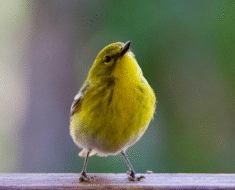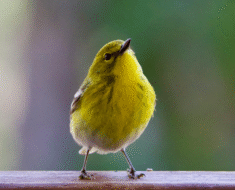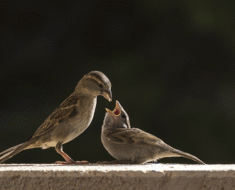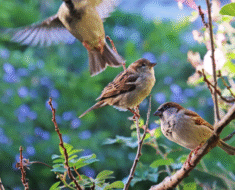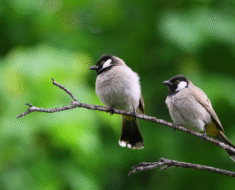
Have you ever watched a sparrow dart through the air, snatching tiny insects in flight? It’s easy to assume that sparrows mostly eat seeds—and they do, as adults. But when it comes to feeding their chicks, insects are absolutely essential. And lately, those insects are becoming disturbingly scarce.
The loss isn’t just a quirky nature fact—it’s reshaping the survival odds for an entire generation of sparrows. Let’s explore why declining insect populations are leaving nestlings hungry, vulnerable, and often unable to thrive.
The First Few Weeks Matter Most
A newly hatched sparrow chick is helpless—blind, featherless, and totally dependent. For the first several days of life, it needs constant feeding. But not just any food will do.
Chicks can’t digest seeds or grains yet. What they need is a high-protein, water-rich diet that only insects can provide—think caterpillars, spiders, ants, beetles, flies, and aphids. In the wild, these bugs are like nature’s baby formula for young birds.
Without a steady supply of insects, parents have nothing nutritious to offer. And no matter how hard they try, they simply can’t fill the gap with other food.
Fewer Bugs = Fewer Chicks Survive
So what happens when the insects disappear? Parents try to adapt. They might switch to whatever they can find—crumbs, grains, even bits of plastic in extreme cases. But this unnatural diet isn’t enough to help chicks grow strong bones, feathers, and immune systems.
Studies have shown that sparrow nestlings fed a diet low in insects are:
-
Less likely to survive past the first week
-
More prone to infections and deformities
-
Underweight and underdeveloped
It’s a silent crisis: the chicks don’t starve outright—they simply grow too slowly to fledge in time or resist disease. And when they fail, fewer birds make it to adulthood. Over time, that trickles up to the larger population.
What’s Causing the Insect Decline?
Here’s the tough part: we’re the reason.
Insect decline is being driven by a mix of modern lifestyle habits, including:
-
Pesticide use: Widely used in farms and even home gardens, insecticides don’t discriminate—they wipe out everything, including the bugs sparrows rely on.
-
Loss of native plants: Landscaping with ornamental or non-native plants doesn’t support the same insects as wild, native flora. Fewer host plants mean fewer bugs.
-
Light pollution: Many insects (especially moths) are drawn to artificial lights and perish due to confusion or exhaustion, reducing availability for nighttime feeders.
-
Climate change: Shifts in seasonal patterns affect insect breeding cycles and abundance. A mismatch between chick hatching and bug season can be disastrous.
The irony? Most of these changes were never meant to harm birds. But they’ve done it all the same.
Zooming In: The Sparrows
Take the sparrows of Pennsylvania, for example. Once a regular sight around suburban yards and schoolyards, these small brown birds are struggling more than ever to feed their young.
Pennsylvania’s rapid suburban growth has led to:
-
Neatly trimmed lawns replacing bug-filled meadows
-
Widespread use of lawn pesticides
-
A shift from native shrubs to decorative imports
-
Streetlights replacing dark corners where insects used to thrive
For sparrows nesting in these areas, the math just doesn’t work. Chicks need to eat dozens of insects per day. If a parent has to fly further and search longer to find just one caterpillar, the nest is already in danger.
And over the past two decades, local bird counts have shown a measurable drop in young sparrow survival rates. It’s not that adults aren’t nesting—it’s that fewer babies are making it out.
Can We Turn This Around?
Yes—but it takes a mindset shift. Sparrows don’t need huge tracts of wilderness. They just need backyards, parks, and even windowsills that support insects.
Here’s how you can help:
-
Plant native flowers and shrubs: Local bugs love local plants. And those bugs feed baby birds.
-
Ditch the pesticides: Yes, even the “safe” ones. Let nature manage the bugs. A few aphids won’t kill your roses, but the absence of aphids might starve a chick.
-
Leave a bit of mess: Fallen leaves, hollow stems, and decaying wood all support insect life. Don’t tidy everything.
-
Turn off outdoor lights at night: Or at least use motion sensors. You’ll help both bugs and birds sleep better.
When you think about it, you’re not just helping birds—you’re helping the ecosystem rebuild from the ground up. Literally.
Conclusion: Hungry Nests, Silent Skies
It’s easy to assume that a little sparrow can adapt to anything. They’re resilient, after all. But even the toughest creatures have limits—and right now, insect loss is pushing sparrows past theirs.
Without bugs, there are no babies. Without babies, there are no songs. It’s a domino effect, quiet and nearly invisible, until suddenly your morning coffee is missing the familiar flutter and chirp outside your window.
